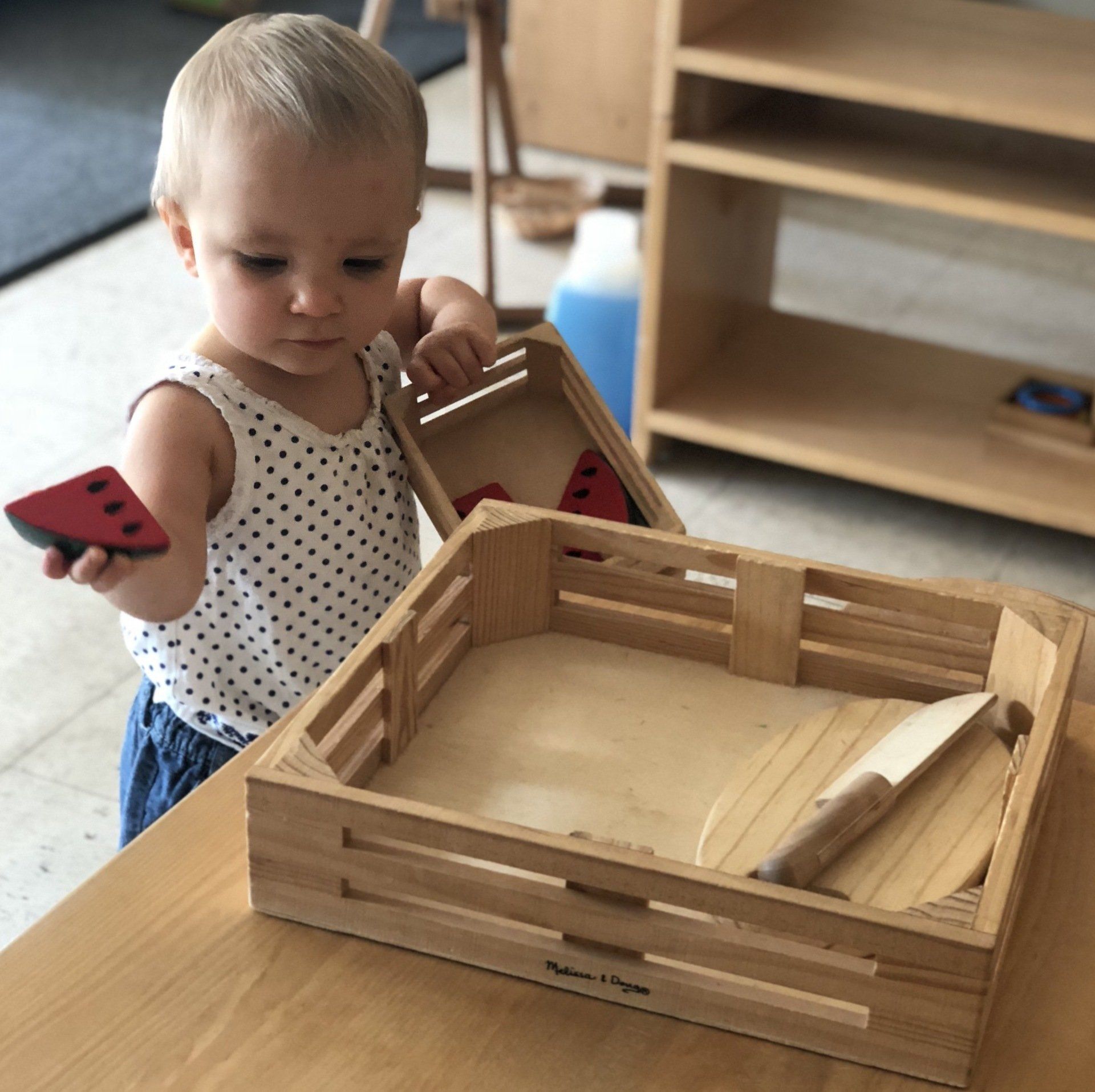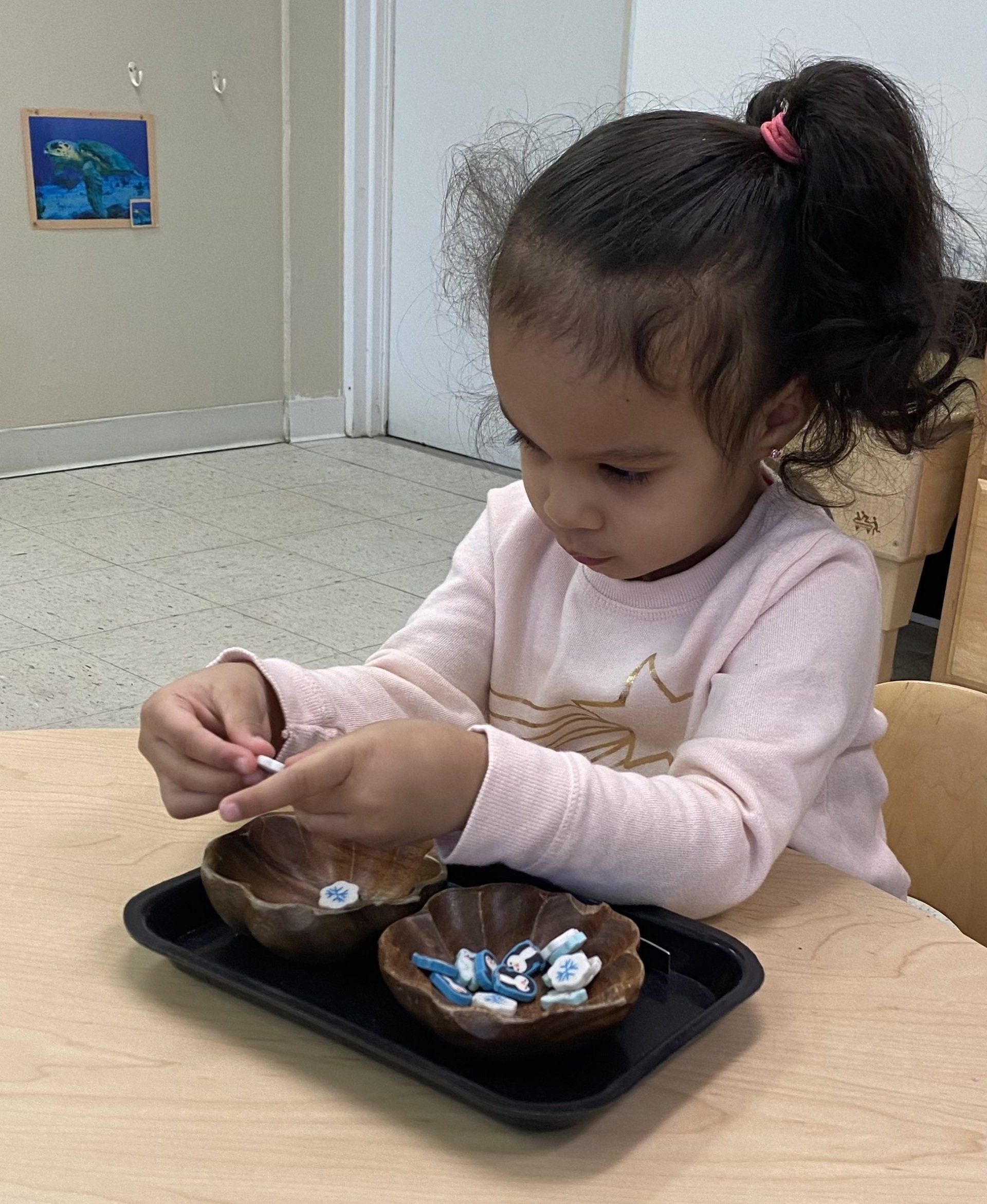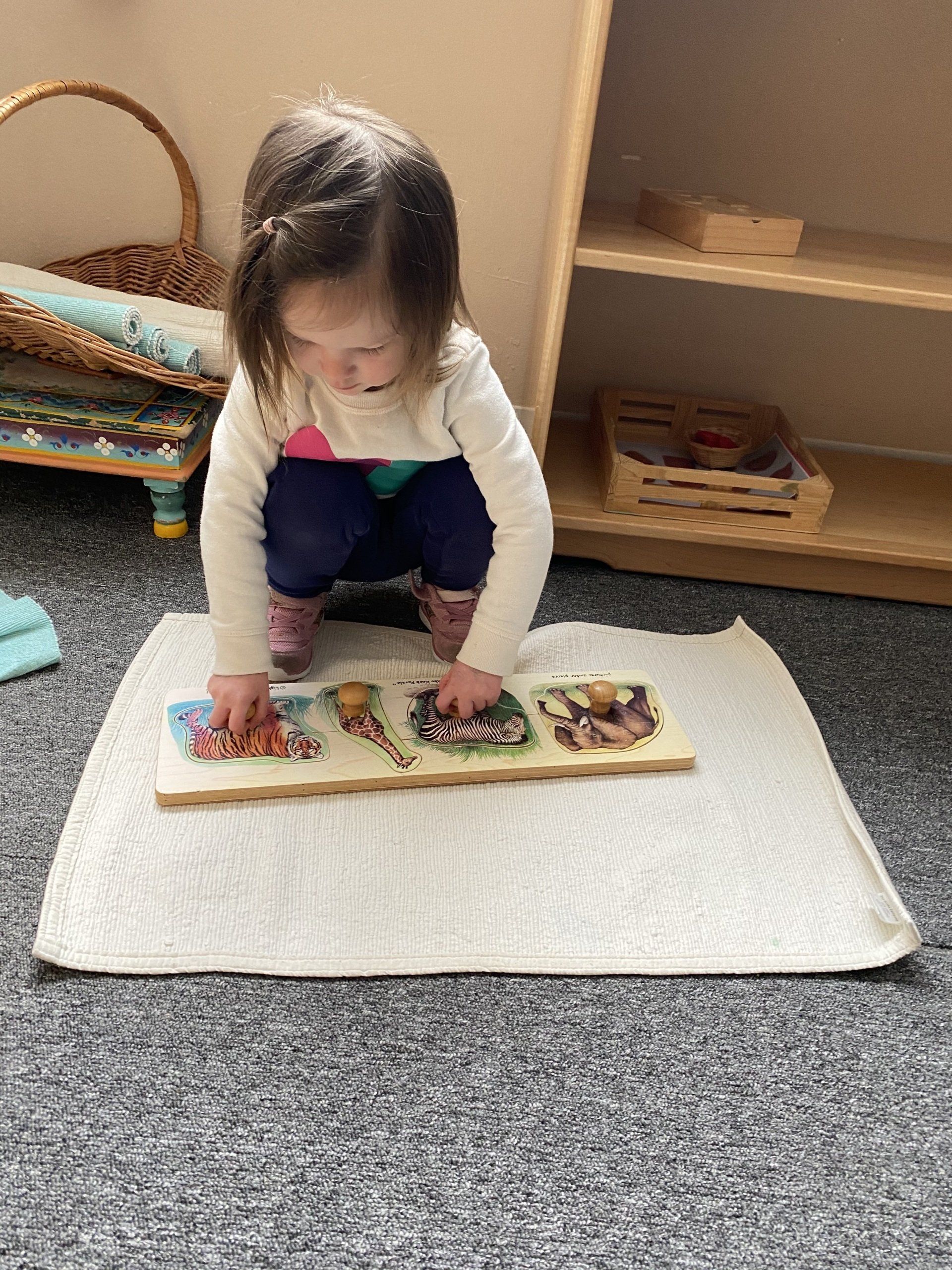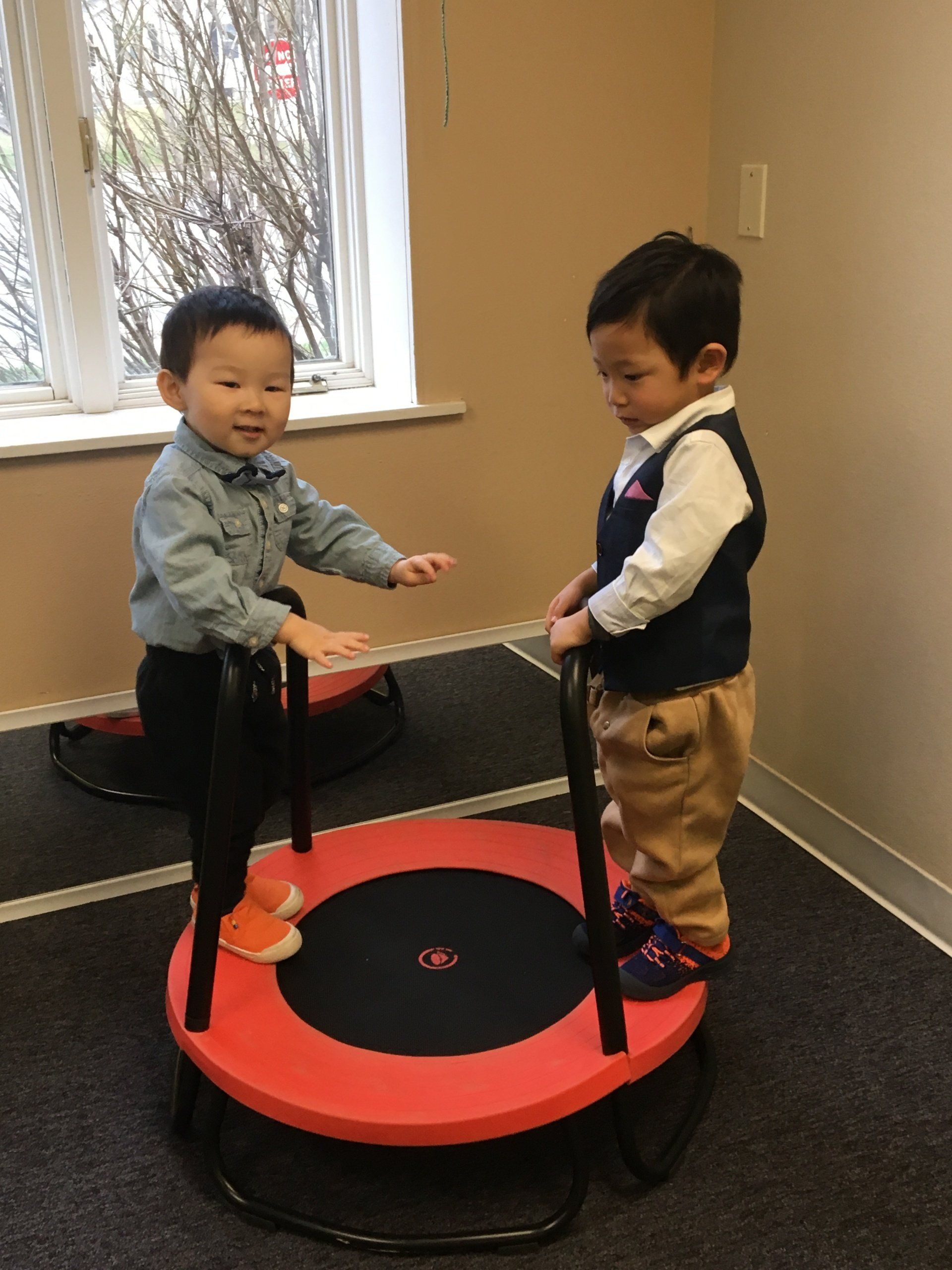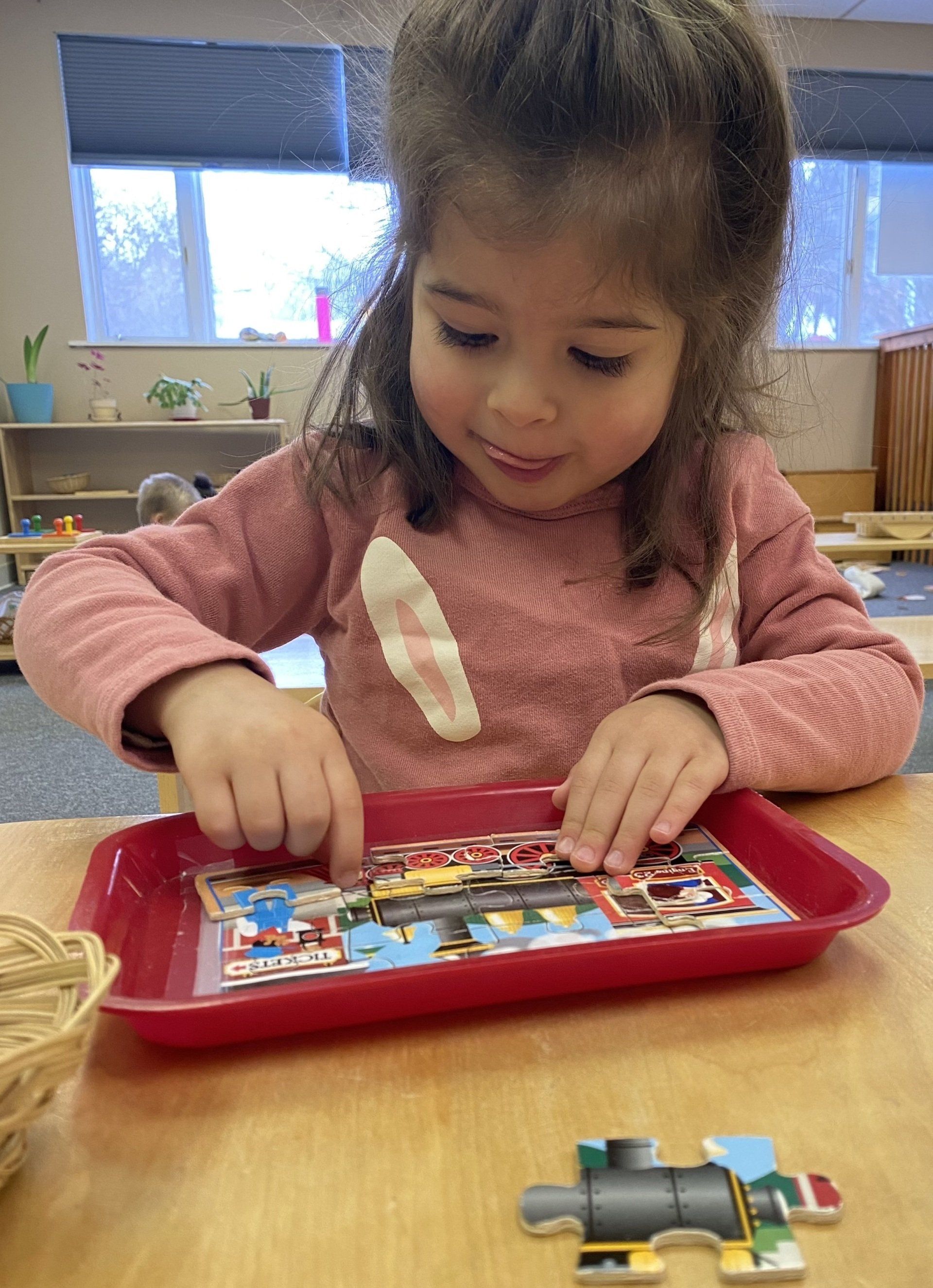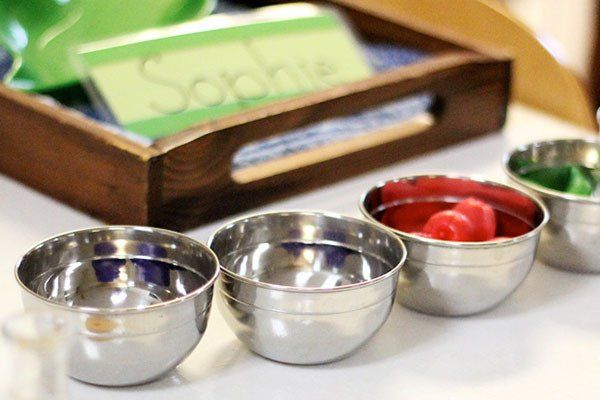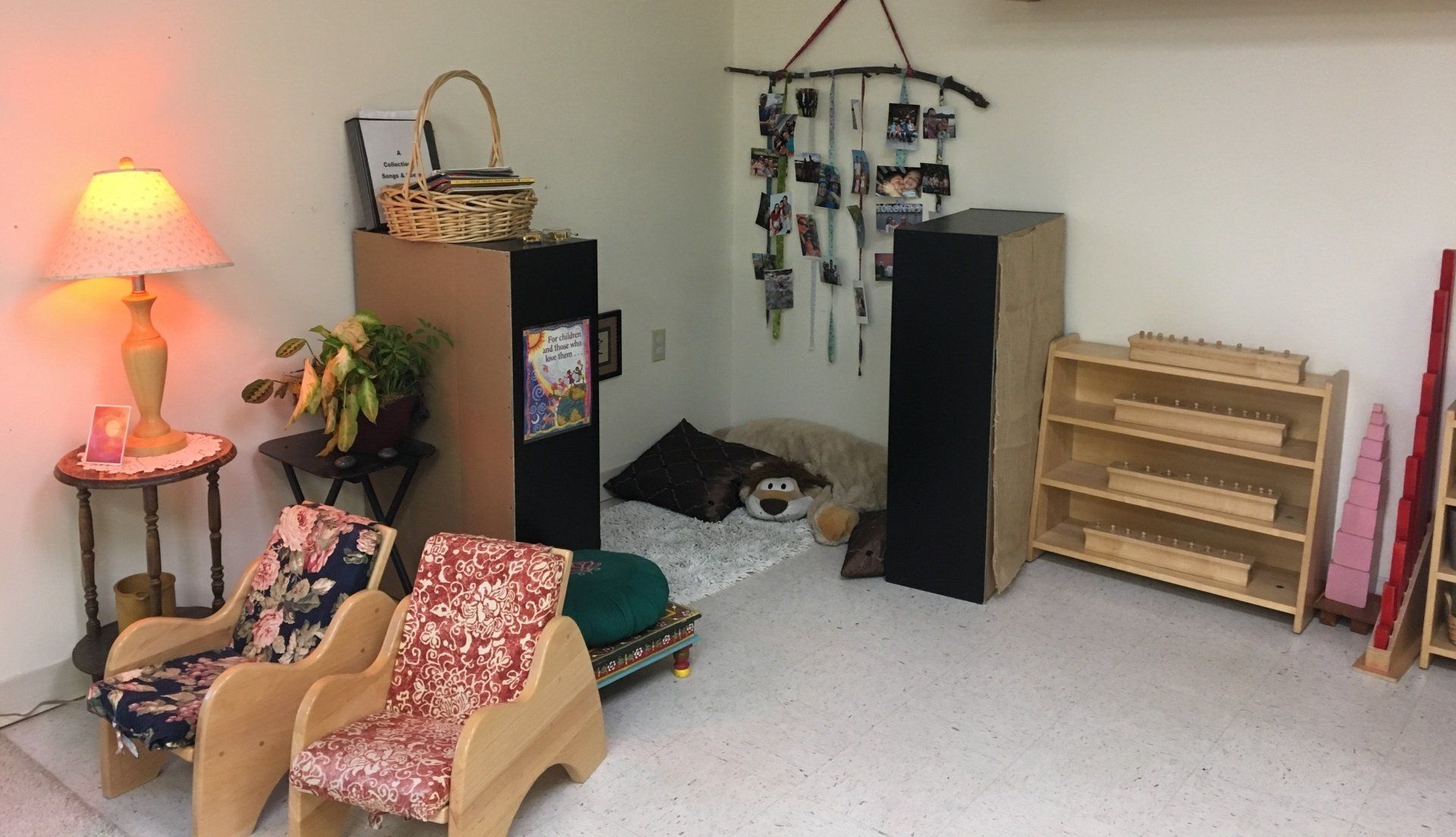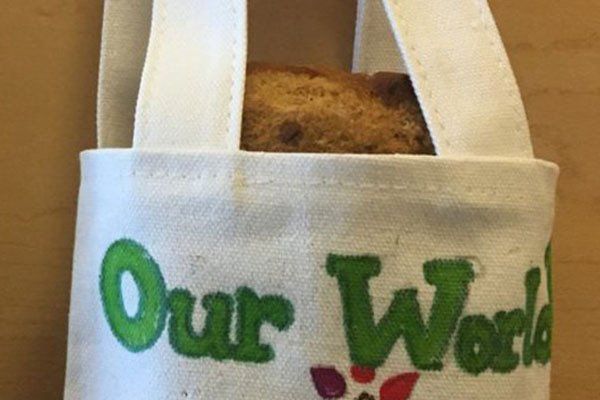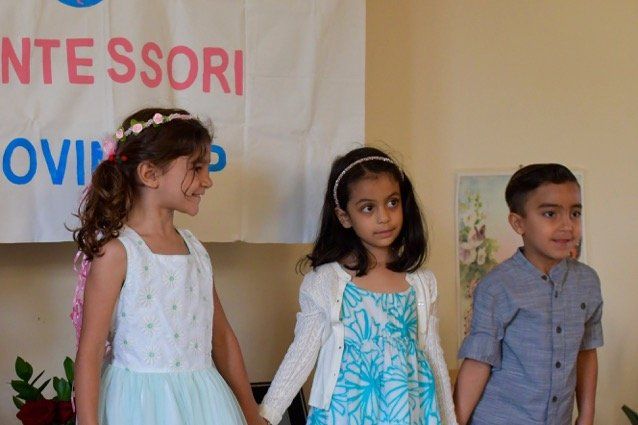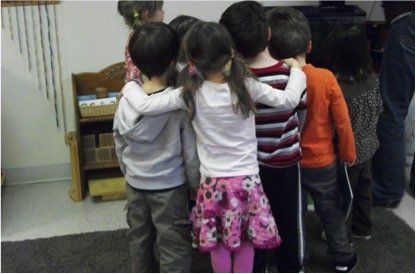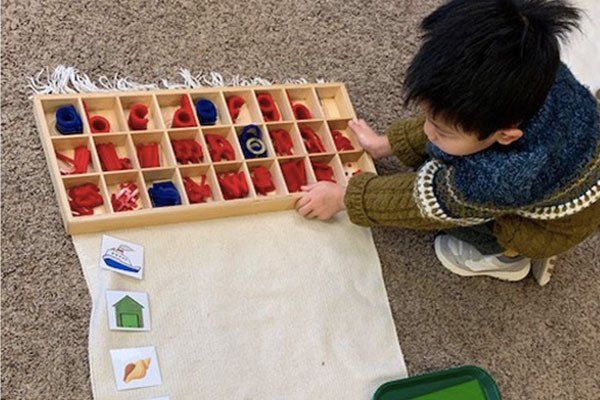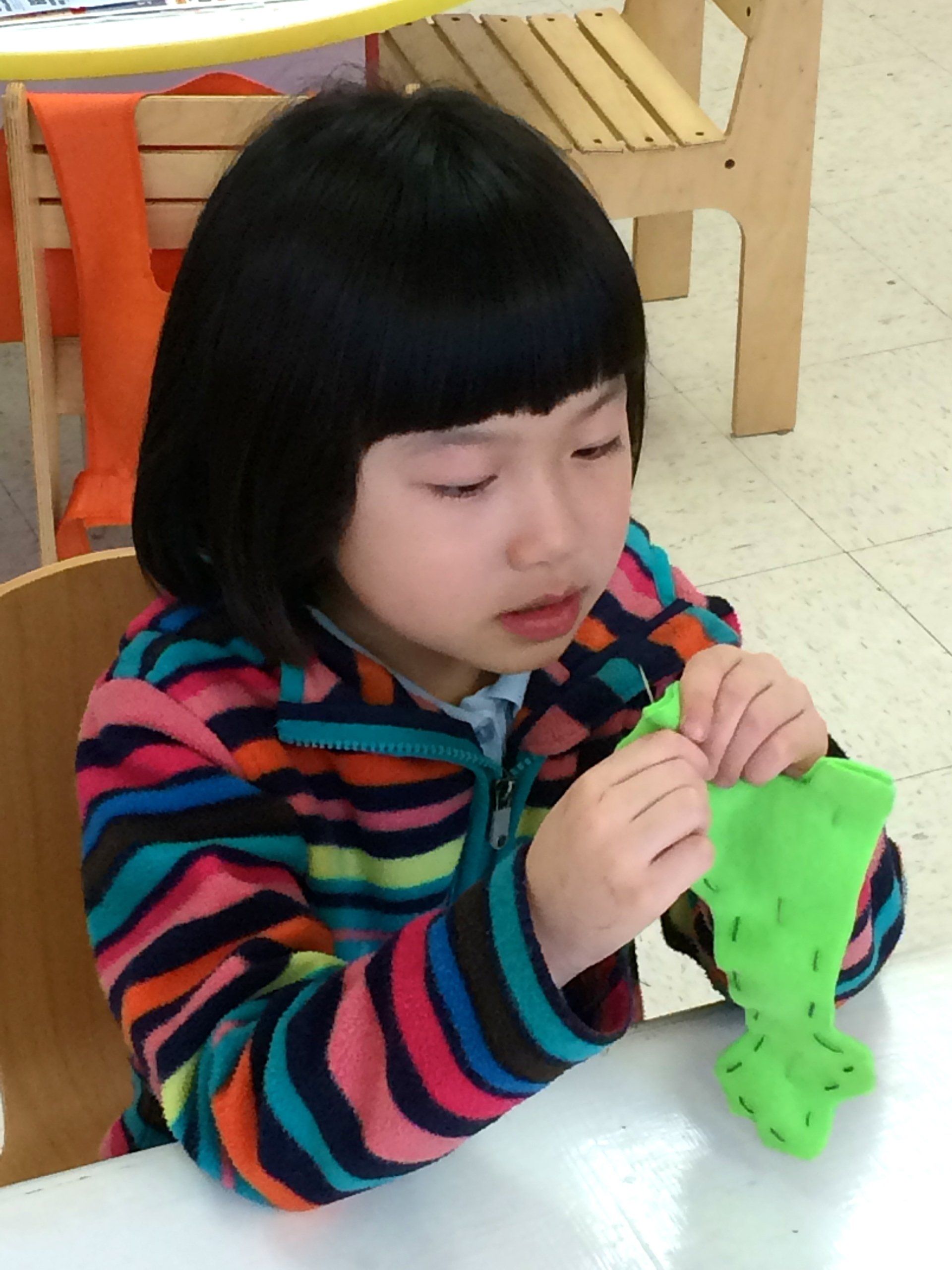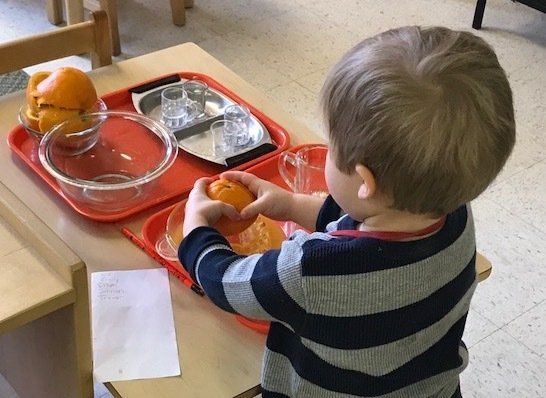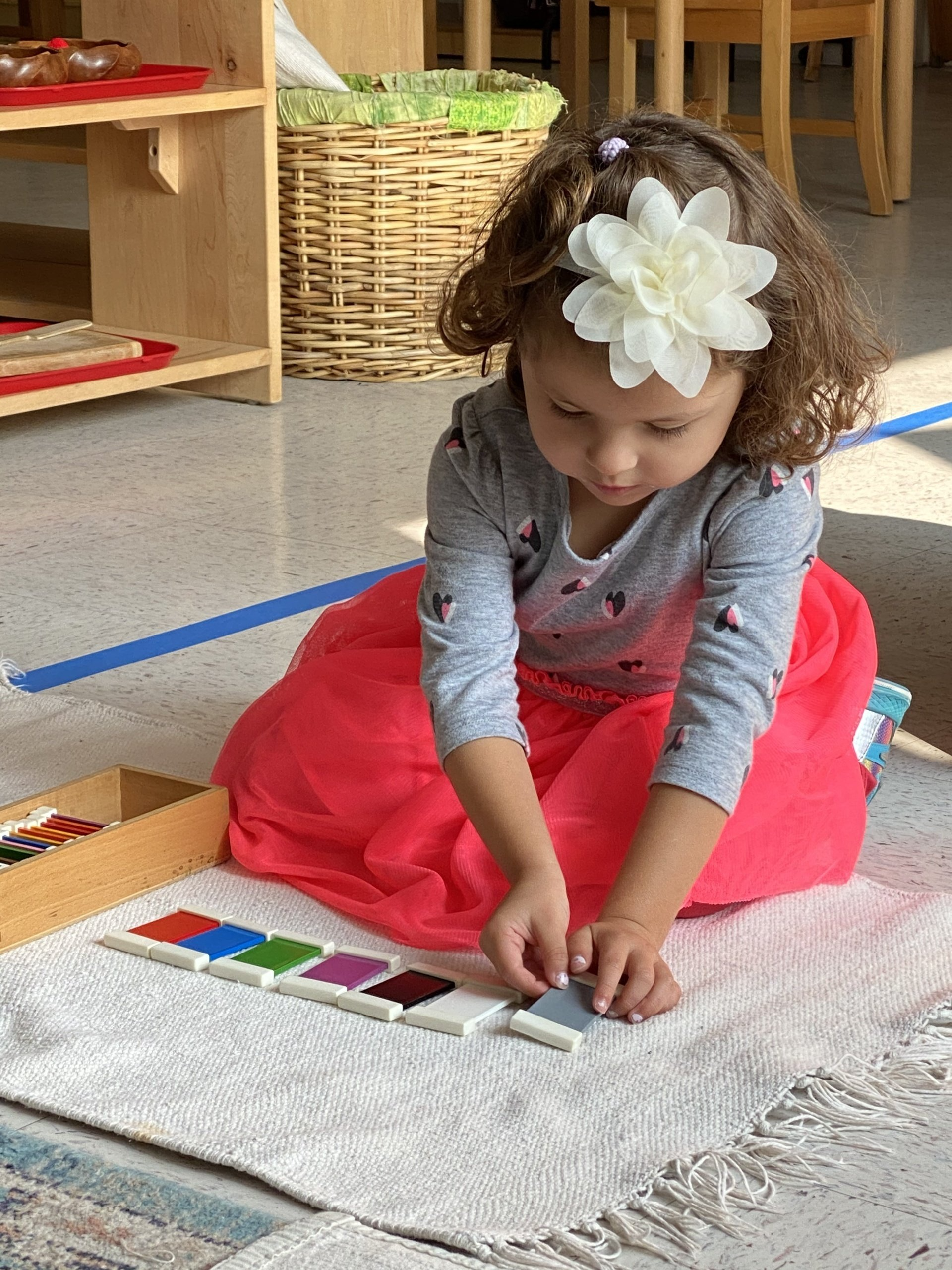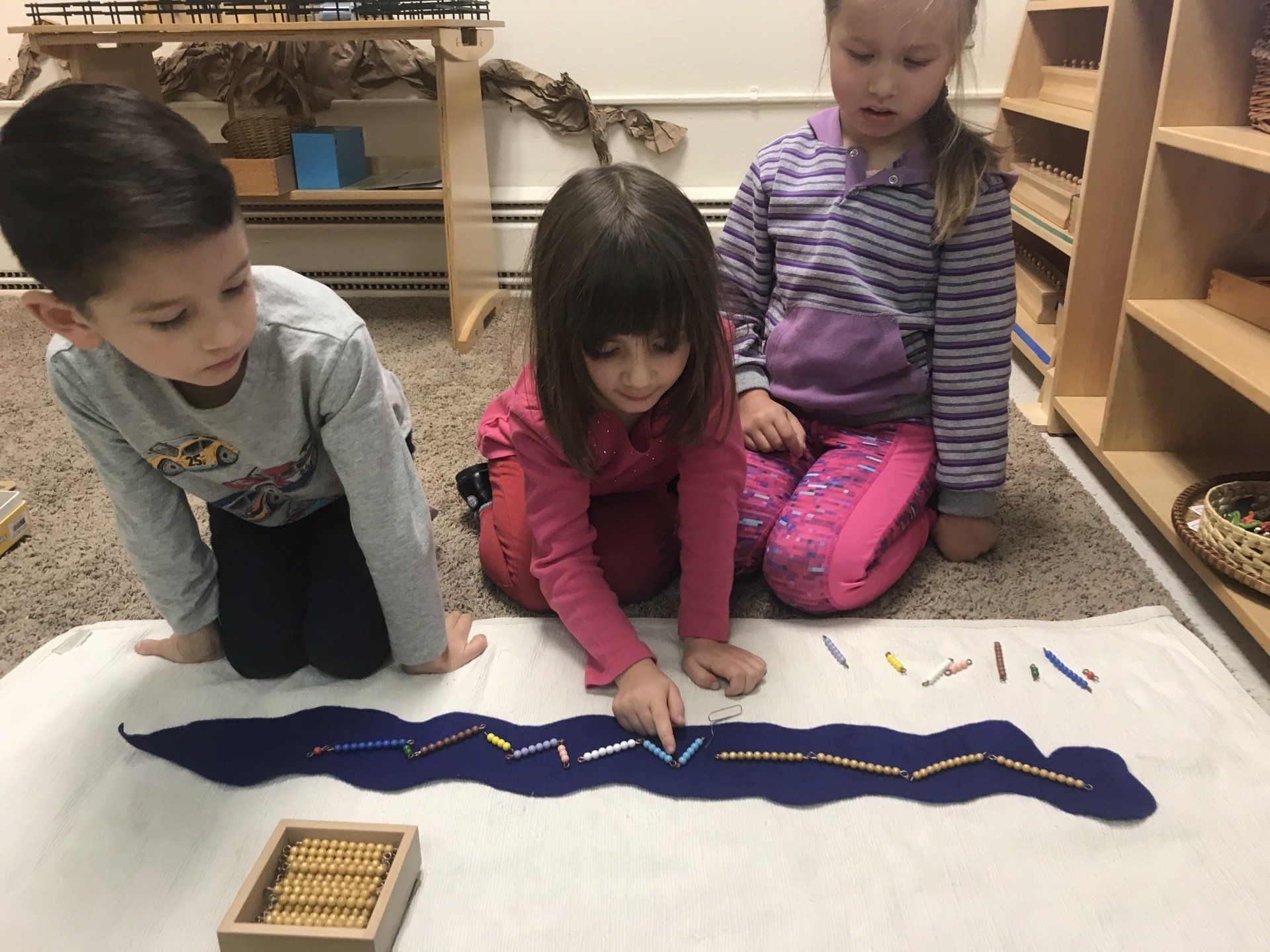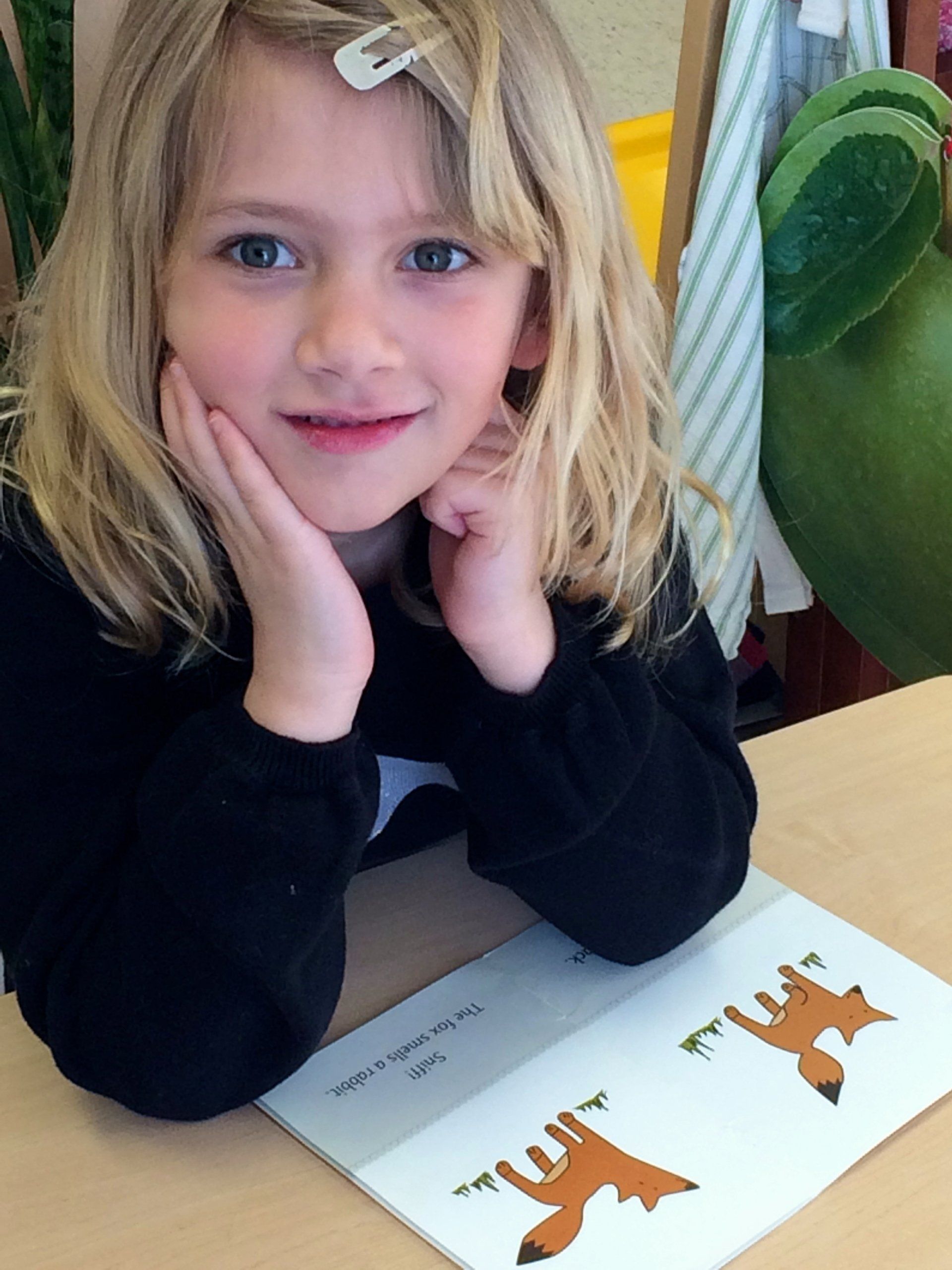Montessori Curriculum
Toddler Curriculum
From Birth to Age 3
Dr. Maria Montessori believed that children start learning the day they are born. The age from birth to age 3 is characterized by Montessori as the unconscious learning of the “absorbent mind,” meaning that a child’s mind is like a sponge, busily soaking in everything from the environment. During the first three years of life, Dr. Montessori observed that children go through the sensitive periods for language, order, movement, and attraction to small objects. During a sensitive period, children experience a special sensitivity to a particular impulse or activity. The task of the Montessori teacher, is to observe the child’s pattern of development and to provide what is necessary to meet the child’s needs.
Child’s Natural Learning
Our Montessori toddler classroom provides a safe, home-like environment for your child to learn to care for themselves and others and to become independent. The classroom fosters a child’s natural curiosity and love of learning. Beautiful, real, and designed specifically for the child, our classroom materials are tailored to the child’s natural development and developmental readiness.
Language Development
Our toddler classroom is rich with materials that help your child grow their vocabulary and communication abilities. Many materials offer constant opportunity for active conversation to build their verbal skills. Around the age of two, children’s speech development experiences an explosion of words, soon followed by sentences. Early language materials and oral exercises like storytelling and reading aloud support the toddler’s need to be immersed in language.
We nurture listening skills and opportunities for expressive speech through exposure to songs, conversation, books, rhyming, puzzles, naming objects (animals, fruits, things in the classroom, etc.), and beginning sound games. Auditory discrimination is learned through loud/quiet, same/different sounds, and books with repetitive phrases
Independence
Our environment supports the child's desire to do things for themselves, developing self-confidence and a sense of accomplishment. Children are guided in care of self activities: washing, dressing, toileting, and eating, according to each child’s individual development. Children learn to care for their environment: cleaning, food preparation and food service; plant care, and animal care.
Social and Emotional Development
Our toddler environment fosters security and independence through clear and consistent boundaries and respect for children and their individual needs. The child will develop a sense of order, independence, self-control, and care of self and others under the patient guidance of the teachers. They are given freedom within limits to practice appropriate behaviors and learn how to be part of a respectful community.
Motor Development
Young children need to move, and our toddler classroom welcomes and encourages gross motor movement. Classroom equipment such as stairs, ramp, slide, and a trampoline, as well as music and movement and free play, all help your child grow stronger and more balanced and coordinated. Fine motor development of hands and fingers is fostered through many different and engaging activities, such as pouring, spooning, opening and closing, bead-stringing, and water activities.
Cognition and Learning
Toddlers are in the sensorimotor stage of learning. They are using all of their senses to discover the world around them, and purposeful movement is critical to their cognitive development. Toddlers will seek out the smallest objects in the classroom and are fascinated with the tiniest of details. Your child’s daily experiences build the neural connections needed for a solid foundation for learning. The Montessori environment is designed to encourage the exploration and freedom your child needs to build these connections.
Children’s House (Primary) Curriculum
The Children’s House (also known as Primary) years, ages three to six, are a developmental period when children are particularly sensitive to taking in information. Our Children’s House program is a three-year cycle (or four if the child begins prior to turning 3 years old), culminating in the kindergarten leadership year. The curriculum is based on these sensitive periods and planes of development. Dr. Maria Montessori observed that children in this stage of life appear to “absorb” information nearly effortlessly from the environment surrounding them.
The Prepared Environment
To take advantage of this naturally occurring propensity for comprehension through doing, touching and experiencing, Montessori Children’s House classrooms are very carefully prepared to offer concrete, hands-on, self-directed, and self-correcting materials. The students use these Montessori materials to understand more abstract concepts, which in more traditional environments they might have been asked to simply memorize or accept. The trained teachers offer guidance and lessons, ensuring exposure to a broad range of activities while allowing each child to follow his/her own interests and pace. In this way, the children lay a solid foundation upon which virtually all of their later learning will be built.
Highly Individualized Education
Ideally, a child enters one of our Children’s House classrooms as a three-year-old and remains in that same environment for three consecutive years, growing and learning at his/her own pace. Children are free to explore and receive lessons for each material.
Each child progresses at a pace that is individually appropriate in each curriculum area, allowing each student to feel successful and challenged at all times. With a mixture of ages in the class, children experience the freedom of learning at their own pace, rather than one that has been pre-determined as appropriate for their chronological age. Younger children learn by observing and emulating older children and for the older children, leadership skills develop naturally.
The Leadership Year
By the time a child has completed a three-year Montessori Children’s House cycle (encompassing the traditional pre-school and kindergarten ages), the child will most likely be reading, doing addition and subtraction in the abstract, be comfortable working independently as well as acting as a leader and being part of a group, and be focused enough to concentrate on and complete a complex series of tasks happily. The third year (kindergarten) is truly an astonishing period of harvesting all of the planting and tending of knowledge that has taken place in the first two years.
A Montessori education is not just cumulative in its learning, but is exponential in its understanding.
Social Interaction
A deep respect for each child characterizes our 3- to 6-year-old Children’s House (Primary) program. These mixed-age classes include 3 year old, 4 year old, and 5 year old children at the start of the year.
As part of our Grace and Courtesy curriculum, the children learn appropriate social interactions, such as saying please and thank you, being kind and helpful, listening without interrupting, and resolving conflicts peacefully.
Inducing Core Values
Although a much more time and energy-intensive approach to education, the Children’s House classrooms at Our World Montessori allow every child to achieve his/her highest potential. Our program fosters independence, concentration, and coordination; grace and courtesy; and the child’s natural sense of wonder and love of learning. Children’s House classrooms include 5 curricular areas: practical life, math, language, sensorial, and cultural.
Practical Life
Practical life exercises are at the heart of a Montessori Children’s House classroom. This classroom area encompasses the activities of real everyday life with multi-sensory materials that encourage the child to accomplish life skills in a purposeful way. These many-layered activities lay the foundation for sequential thinking, order, concentration, coordination, abstract understanding, and self-confidence.
Generally, the activities of practical life revolve around four areas: caring for the self, caring for the environment, grace & courtesy, and movement of objects. In addition to teaching specific skills, practical life activities promote independence, and fine- and gross-motor coordination.
Food Preparation
Practical life activities help the child to properly take care of himself so that he may gain independence and not have to rely on an adult for his basic needs. An area which is a very important part of practical life is food and its preparation. The children learn self care as they wash their hands. They develop independence as they learn to prepare food. They improve fine motor skills as they prepare the food. They practice grace and courtesy as they offer the food to share with their friends.
Sensorial
Activities in the sensorial area allow the child to develop and refine each of his 5 senses (seeing, hearing, touching, tasting, and smelling) through hands-on exploration of the Montessori multi-sensory materials. These are specifically designed materials to define weight, size, shape, color, sound, taste, smell, and texture. Dr. Montessori believed that through his senses, the child studies his environment, and through this study, the child then begins to understand his environment. The purpose and aim of Sensorial work is for the child to acquire clear, conscious, information and to be able to then make classifications in his environment. The sensorial materials build a foundation for language, writing, and math through the use of hands-on engagement.
Mathematics
Concrete Montessori materials are used to introduce abstract mathematical concepts in our Children’s House classrooms. The children learn the relationship between numeral and quantity through concrete, hands-on, self-correcting materials which introduce the decimal system. Through these specifically designed Montessori materials, Children’s House students are introduced to the world of mathematics in a logical, concrete, and understandable manner. Montessori offers the child a strong and solid foundation in the understanding of mathematics through sequential materials and lessons.
Each child works with materials of his own choice and at his own pace, developing mathematical reasoning skills. Each and every math idea, from quantity to the idea of zero to the concept of odd and even numbering, is expressed in a physical, concrete form, which the students can manipulate and thereby understand. In this way, children are intrigued and drawn into mathematics rather than being intimidated or confused. Addition, subtraction, and even multiplication and division are introduced in concrete ways at an individualized pace for each child.
Language Development
Language materials are found in all curricular areas of a Children’s House classroom. For the younger children, language materials are often tactile, catering to their sensitivity to learning through touch. Learning letter sounds phonetically gives the students a tool that opens written language up for them.
Tracing letter shapes made of sandpaper is the foundation for writing. Cursive handwriting, with its fluidity and flow, is introduced to bring this written language to paper. The students’ oral language ability continues to grow and develop, with clear and precise vocabulary tied to all aspects of classroom activity. Language is tied into all curricular areas of a Children’s House classroom. Beginning when they are ready and proceeding at their own pace, the children begin to read.
Cultural Studies
This curricular area includes physical and cultural geography, science, botany, zoology, art, music, and history. Culture is woven into the other areas of the classroom as well. Our Children’s House classrooms participate in cultural celebrations throughout the school year, showcasing specific countries and their traditions. The students prepare foods from the countries, and learn songs, dances, folktales and more. Additionally, the amazing diversity of the Our World Montessori community makes culture come alive, offering opportunities for exposure to different practices, foods, and beliefs.

